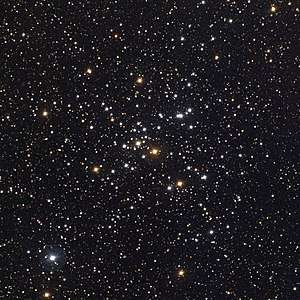M41 | NGC 2287 | Open Cluster | Canis Major | 2,300 Light Years Away
Messier 41 is an open star cluster located in the constellation Canis Major, discovered by the Italian astronomer Giovanni Batista Hodierna in the 17th century and later independently cataloged by Charles Messier in 1765. Positioned approximately 2,300 light-years away from Earth, this celestial assembly is part of the Milky Way galaxy. Messier 41 is a relatively young cluster, with an estimated age of around 190 million years, and it spans a region of about 25 light-years in diameter.
Composed of over 100 stars, Messier 41 showcases a vibrant array of colors, indicative of variations in temperature and composition among its stellar members. The stars within this open cluster are gravitationally bound, forming from the same interstellar cloud of gas and dust. Messier 41 is easily visible with the naked eye and is a popular target for amateur astronomers, particularly when observed through binoculars or small telescopes.
Observations of Messier 41 contribute to our understanding of open star clusters, providing insights into the dynamics of stellar systems and the processes involved in the formation and evolution of stars within our galaxy. The study of such stellar groupings helps astronomers unravel the complexities of star birth and the interactions between stars in shared cosmic environments. Messier 41, with its diverse stellar population and visually appealing arrangement, adds to the ongoing narrative of star birth and evolution within the intricate tapestry of the cosmos.

